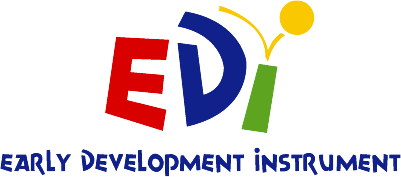Identifying children with poor health and development early is essential for providing effective interventions capable of improving outcomes by the time children reach school age. An important factor in improving the effectiveness of early interventions is to better understand how early life factors predict children’s health and development.
A study led by Catherine Chittleborough explored whether characteristics measured routinely by midwives and neonatal nurses during the perinatal period can predict which children will later have poorer development in their first year at school. The goal was to provide more information to help accurately target families in need of intensive family support programs.
To do so the authors linked Australian Early Development Census (AEDC) data for all South Australian children attending their first year of full-time schooling in 2009 with perinatal and births records.
Sociodemographic predictors
- Mother’s age
- Mother’s country of birth
- Mother’s marital status
- Mother’s occupation
- Father’s occupation
- Area disadvantage
- Geographic location
- Child Aboriginal or Torres Strait Islander
- Gender
Pregnancy and birth predictors
- Mother smoked in second half of pregnancy
- Number of previous births of at least 20 weeks gestation
- Number of prenatal visits
- Child birthweight
- Child plurality
- Mother had anaemia
- Mother had hypertension
- Mother had diabetes
- Antepartum haemorrhage
- Procedures performed in pregnancy
- Emergency caesarean section
- Apgar score at 5 minutes
- Resuscitation at delivery
What did they find?
Using all 22 predictors in Model 1 showed a moderate ability to discriminate vulnerability on the AEDC (AUROC for males = .699, and for females = .737). A randomly-selected vulnerable male child would have a higher perinatal risk score than a randomly-selected male child who was not vulnerable 69.9% of the time.
Using only six predictors in Model 2 (mother’s age, mother’s marital status, mother’s occupation, father’s occupation, number of previous pregnancies resulting in births ≥20 weeks, and smoking in second half of pregnancy) did not greatly decrease the ability to discriminate vulnerability (AUROC for males = 0.682, and for females = 0.724).
Using at least one of the predictors in Model 2 as a screening cut-off would correctly identify 69.4% of the males and 77.3% of the females vulnerable on two or more AEDC domains at age five. However, this cut-off would mean that half of the population of children at birth would be considered ‘at risk,’ a proportion too large to offer intensive support programs. This cut-off would also target about half of the children who were not vulnerable on two or more AEDC domains at school entry for early intervention.
Instead, a cut-off of three or more perinatal predictors in Model 2 would only correctly identify approximately 25% of children vulnerable on two or more AEDC domains at age five. However, this would require offering interventions to less than 10% of children at birth. Doing so would also target a much lower percentage of the children without poor development in their first year at school for early intervention (6.7% for males, 8.6% for females).
What does it mean?
A set of six risk factors collected at birth can moderately discriminate between children with and without poor development at age five. If early interventions were offered to families with three or more of these risk factors at birth, these services would be offered to about 10% of children. Lowering the risk count cut-off below three would identify more children who would later be vulnerable, but the proportion of children in the population being identified as ‘in need’ would rise to an impractical level for service providers.
Policy makers and service providers need to consider the trade-off between sensitivity, specificity, and the proportion of the population that would require services before using prediction models as screening tools.

